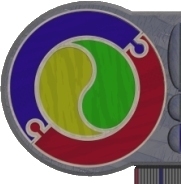Database Structures
PASCAL RECORDS
Set, array, string - all organised collections of data of the SAME
type.
Sometimes it is useful to record together related information that
have differing types - use a RECORD
syntax type name = record
field1 : type;
field2 : type;
field3 : type;
fieldn : type
end
Where fieldn are the cell names, and type is
the data style of that cell.
Notice with this structure, that a record is similar to a vector,
but with a major difference - records allow us to store mixed
data types together.
eg: Type blackbookentrys = record
name : string[30];
stdcode : string[4];
phnum : string[10];
yrlevel : 8..12
end;
Var bbentry : blackbookentrys;
The above definition and declaration would be useful if you wanted
to store a SINGLE friends details
Single records are rarely encountered - more commonly used are collections
(arrays) of records
Accessing each of the fields in a record requires a new reference
scheme. Using the above example to assign values to each of the fields,
the following code could be used:
Begin
bbentry.name := "Olivia Paarts";
bbentry.stdcode := "3214";
bbentry.phnum := "30001234";
bbentry.yrlevel := 9;
Note in the above assignment statements, the name of each field was
explicitly referenced (ie. the container name and the field name were
declared). Note also that a dot (.) separated the container name and
the field name.
Introducing a Context
A major inconvenience is introduced in the previous example - the
necessity to repeatedly retype the container name as part of a field
reference. This can be averted by introducing a reference context:
with bbentry do
begin
name := "Olivia Paarts";
stdcode := "3214";
phnum := "30001234";
yrlevel := 9;
end
The with statement allows us to pre-declare the container
name, thus placing us within the context of the container. Once inside
that container, the field names can be referred to without ambiguity.
Tables
The most common application of records is to group them into arrays.
One could imagine that an array of records is similar to a table (with
like fields aligned into columns, each record forming a row of the
table
A TABLE CASE STUDY - An Army
Let us suppose that we wish to record details about a number of sodliers
(including name, rank, serial number and IQ). Declarations similar
tot he following could be used:
Const maxSoldiers = 100;
Type soldiers = record
name : string[30];
rank : string[5];
serNum : byte; {a small army}
IQ : byte
end; {soldier}
armies = array[1..maxSoldiers] of soldiers;
Var army : armies;
loop : 1..maxSoldiers;
temp : integer;
The armies data type is a table structure - each row represents
an individual soldier
To enter a particular soldiers data (say soldier # 3), we could use
the following assignments:
Begin
army[3].name := "Olivia Paarts";
army[3].rank := "Priv";
army[3].serNum := 42;
army[3].IQ := 100;
..or conversely
Begin
with army[3] do
begin
name := "Olivia Paarts";
rank := "Priv";
serNum := 42;
IQ := 100;
end;
Because tables (or arrays of records) are arrays, it is possible
to deal with their contents sequentially. Let us suppose that our
army is FULL (ie. all the soldiers have heen assigned) - to print
ot the names of all soldiers stored, the following code could be used:
for loop := 1 to maxSoldiers do
showmessage(army[loop].name)
Suppose we needed to calculate the average IQ of our army, using
the integer temp variable, we could perform the following code
segment:
temp := 0;
for loop := 1 to maxSoldiers do
temp := temp + army[loop].IQ;
showmessage('average IQ = '+ floattostr(temp/maxSoldiers))
Compound
Data Structures - RECORDS


